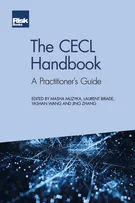Hedging Instruments
Hedging Instruments
Michael, Elizabeth, Debra and Sean were introduced in Chapter 2 to represent a small but diversified example of how currency exposure is threaded throughout investment activities. Each of those professionals sees exposure to currency fluctuations that can have adverse effects on the results of their investment decisions and activities. Michael, Elizabeth and Debra are utilising hedging instruments to the best of their abilities based on the tools and practices available to them.
In this chapter, I will describe those existing tools and practices and demonstrate how one of them is easily adaptable to a process made more efficient, effective and cohesive in terms of how we manage the currency hedging component of all our investment activities.
First, however, let us acknowledge what the currency hedging practices are. They come down to the regular use of any one of three common and very familiar instruments. I will define them briefly and explain their benefits and drawbacks and, in the process of doing so, provide an understanding of how one of them lends itself well to automation.
LET’S START WITH OPTIONS
Options are an effective way to insure that your asset – in this
Copyright Infopro Digital Limited. All rights reserved.
You may share this content using our article tools. Printing this content is for the sole use of the Authorised User (named subscriber), as outlined in our terms and conditions - https://www.infopro-insight.com/terms-conditions/insight-subscriptions/
If you would like to purchase additional rights please email info@risk.net
Copyright Infopro Digital Limited. All rights reserved.
You may share this content using our article tools. Copying this content is for the sole use of the Authorised User (named subscriber), as outlined in our terms and conditions - https://www.infopro-insight.com/terms-conditions/insight-subscriptions/
If you would like to purchase additional rights please email info@risk.net






